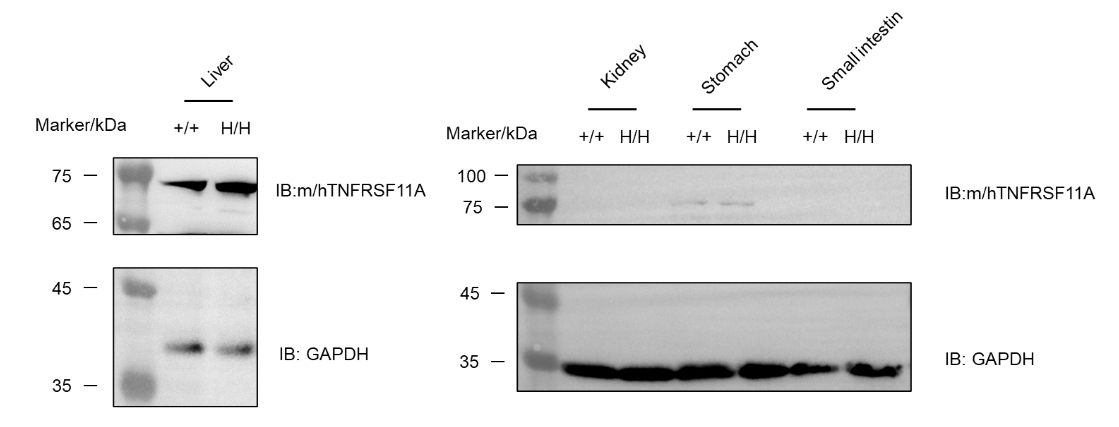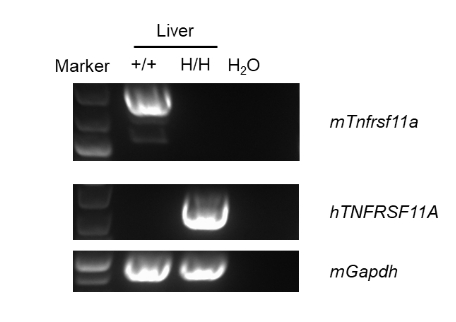


C57BL/6N-Tnfrsf11atm1(TNFRSF11A)Bcgen/Bcgen • 112784
| Product name | B-hTNFRSF11A mice |
|---|---|
| Catalog number | 112784 |
| Strain name | C57BL/6N-Tnfrsf11atm1(TNFRSF11A)Bcgen/Bcgen |
| Strain background | C57BL/6N |
| NCBI gene ID | 21934 (Human) |
| Aliases | CD265, FEO, LOH18CR1, ODFR, OFE, OPTB7, OSTS, PDB2, RANK, TRANCE-R, TRANCER |
Gene targeting strategy for B-hTNFRSF11A mice. The exons 2-7 of mouse Tnfrsf11a gene that extracellular domain are replaced by human counterparts in B-hTNFRSF11A mice. The genomic region of mouse Tnfrsf11a gene that encodes cytoplasmic portion is retained. The promoter, 5’UTR and 3’UTR region of the mouse gene are also retained. The chimeric TNFRSF11A expression is driven by endogenous mouse Tnfrsf11a promoter, while mouse Tnfrsf11a gene transcription and translation will be disrupted.

Western blot analysis of TNFRSF11A protein expression in homozygous B-hTNFRSF11A mice. Various tissue lysates were collected from wild-type C57BL/6N mice (+/+) and homozygous B-hTNFRSF11A mice (H/H), and then analyzed by western blot with anti-TNFRSF11A antibody (abcam, ab182158). 40 μg total proteins were loaded for western blotting analysis. TNFRSF11A was detected in liver and stomach.

Strain specific analysis of TNFRSF11A mRNA expression in wild-type C57BL/6 mice and B-hTNFRSF11A mice by RT-PCR. Liver RNA were isolated from wild-type C57BL/6 mice (+/+) and homozygous B-hTNFRSF11A mice (H/H). Mouse Tnfrsf11a mRNA was detectable only in wild-type C57BL/6 mice. Human TNFRSF11A mRNA was detectable only in homozygous B-hTNFRSF11A mice but not in wild-type mice.